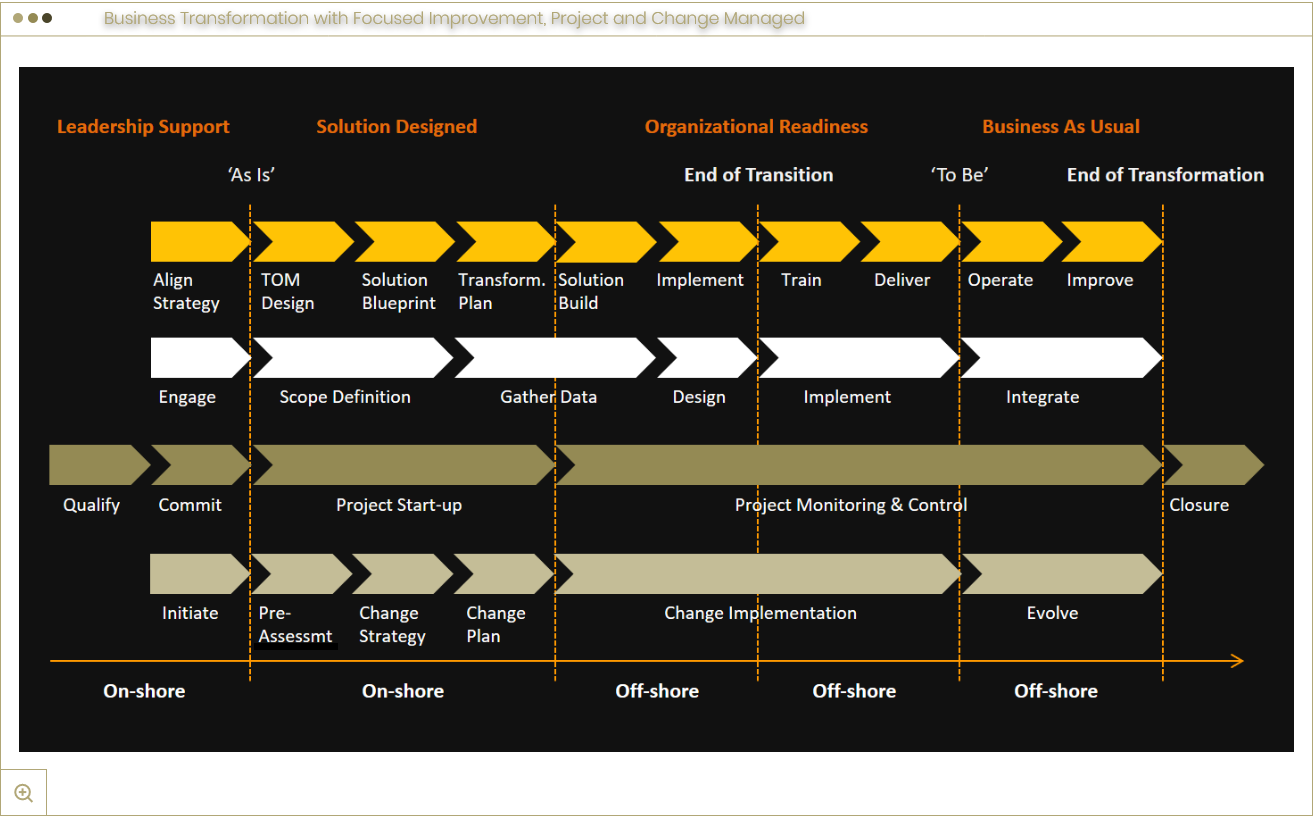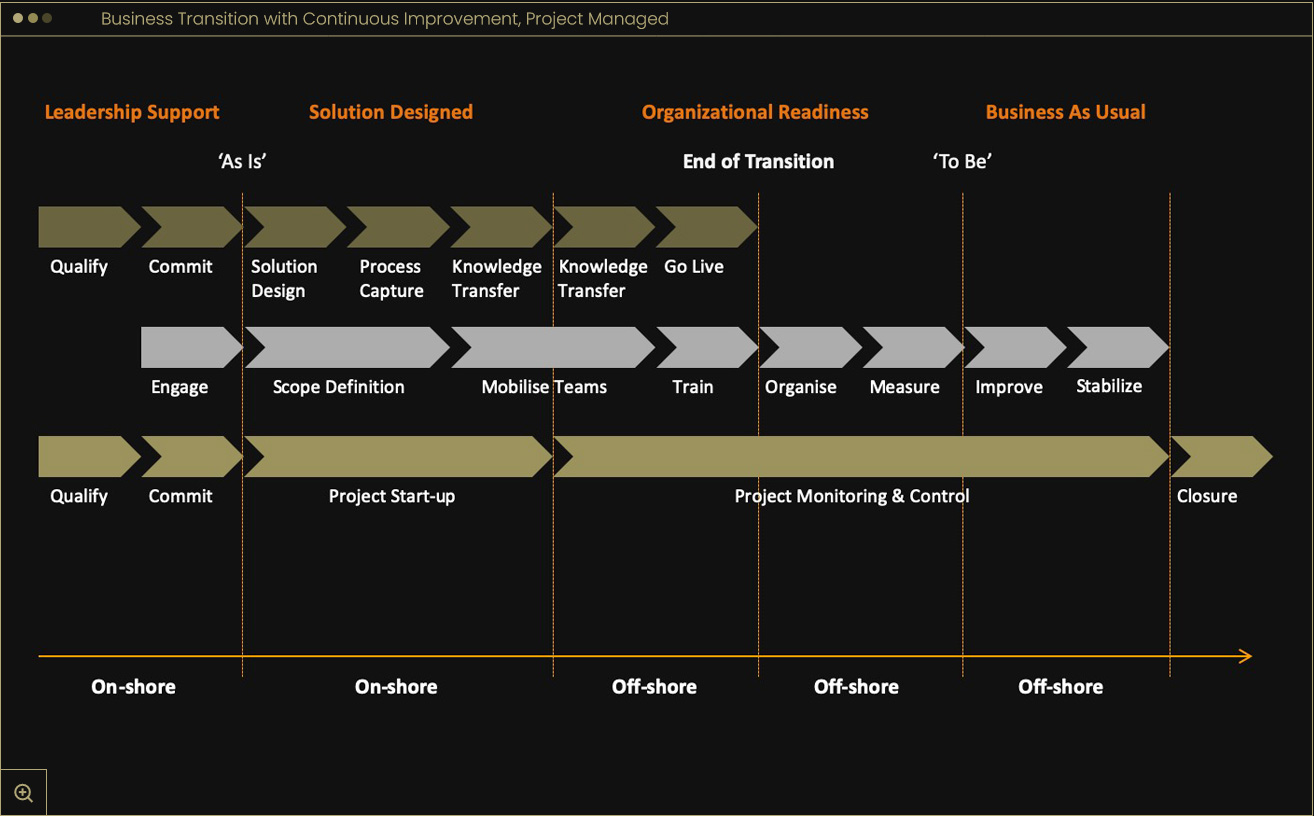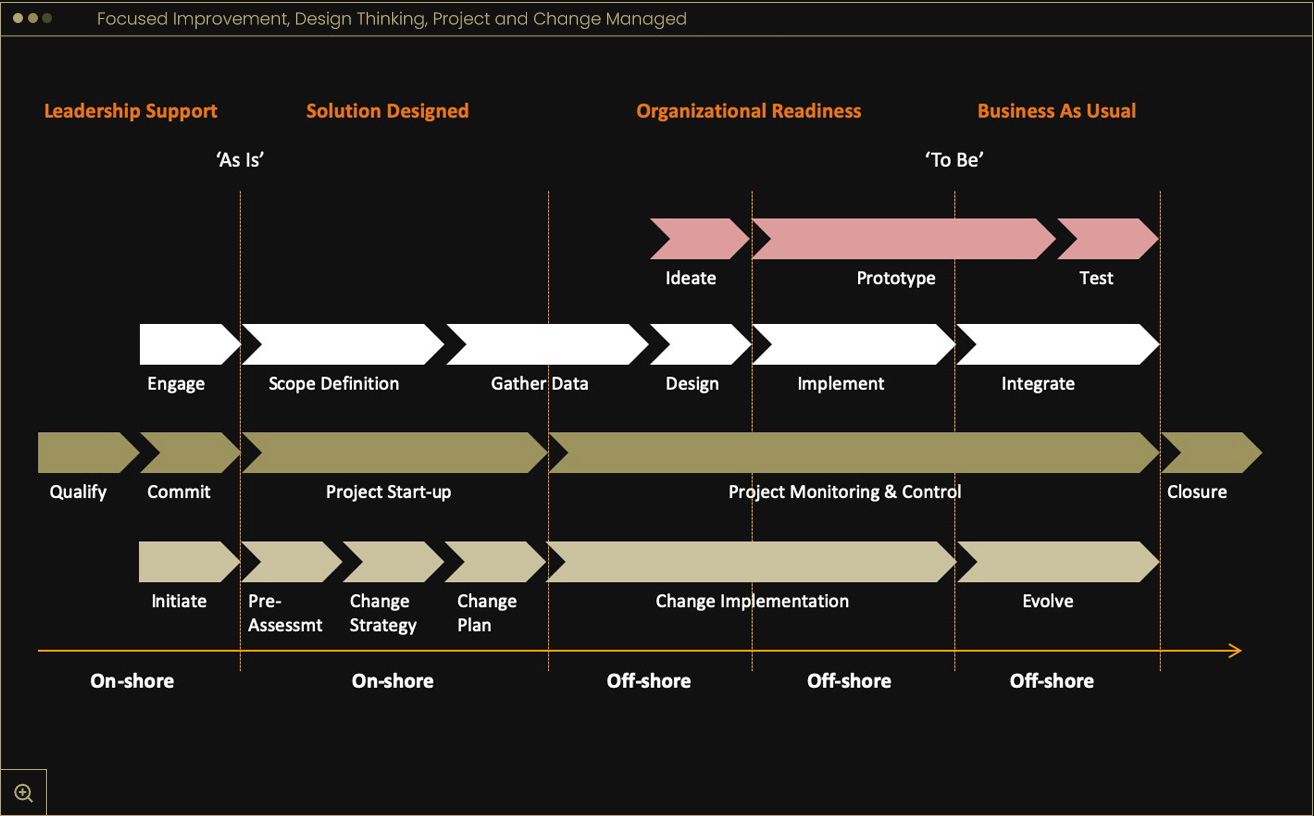What Is Project & Change Management?
MMC follows external industry leading project management methodologies / frameworks such as GDPM, PRINCE 2, SAFe 5, or Scrum to catering for the specific needs of each project. This allows the transition or the transformation to moving sequentially (Waterfall) or iteratively (Agile) in a consistent and coordinated manner ensuring that the desired business outcomes and benefits are achieved whilst minimising the overall risk and cost.
We will always define the most suitable project management approach together with you, its governance structure and its key controls. We will take responsibility for defining the work packages and will shape the transition / transformation work streams within your program. Our collaborative engagement model determines together with you the critical success factors in the Qualify and Commit stages early in the project.
Our approach to change management follows the same rigor and is fully integrated with the project management life cycle. It is critical to understand the strategic direction and making the vision for transition and transformation operational. By selecting the optimal approach, we can establish the best change plans for you alongside strong governance, stakeholder management and effective communications. It is vital to measure the organization’s capacity and readiness for change.
MMC will facilitate Learning & Development initiatives to support each employee in the transition and transformation journey. With our human-centred focus, we ensure that processes, policies and procedure for the target organization are understood alongside the new organizational structure and cultural vision, roles and responsibilities, skills and competences.
What is agile?
Agile is a process by which a team can manage a project by breaking it up into small pieces that are completed in work sessions that run from the design phase to testing and quality assurance and involving constant collaboration with stakeholders and continuous improvement and iteration at every stage. These sessions are often called sprints, the term for iteration used in one specific and popular Agile development method known as Scrum.
The Agile methodology begins with clients describing how the end product will be used and what problem it will solve. This clarifies the customer’s expectations to the project team. Once the work begins, teams cycle through a process of planning, executing, and evaluating which might just change the final deliverable to fit the customer’s needs better.
The Agile methodology enables teams to release segments as they are completed. This continuous release schedule allows for teams to demonstrate that these segments are successful and, if not, to fix flaws quickly. The belief is that this helps reduce the chance of large-scale failures, because there is continuous improvement throughout the project lifecycle.
The main benefit of Agile Project Management is its ability to respond to issues as they arise throughout the course of the project. Making a necessary change to a project at the right time can save resources and, ultimately, help deliver a successful project on time and within budget.
What are the advantages/disadvantages of agile vs waterfall?
Agile project management was, and remains, a counter to the waterfall methodology. The waterfall methodology features a strict sequential approach to projects, where initiatives start with gathering all requirements before the work begins, scoping out the resources needed, establishing budgets and timelines, performing the actual work, testing and then delivering the project as a whole when all the work is completed.
Proponents of agile project management say the methodology delivers numerous benefits. Those include the rapid deployment of solutions, more efficient use of resources, greater flexibility and adaptability to changing needs, more rapid detection of problems – and thus quicker fixes – and increased collaboration with users and, therefore, products and services that better meet user needs. However, there are also potential drawbacks including a tendency for projects to go off track, a lack of documentation and less predictable outcomes.
Because agile project management relies on the ability to make decisions quickly, it is not suitable for organizations that tend to deliberate over issues for a prolonged period or for those that take decisions to a committee.
When to use an agile approach?
The Cynefin Framework by Dave Snowden determines between four project situations to choose the most suitable approach:
For complex situations, a feedback-driven (agile) approach is advised.
For complicated situations, a plan-driven (waterfall) approach is recommended.
For simple situations, a checklist-driven approach will do.
For chaotic situations, it would be advised to stabilize the organization first prior to execute a project.
What is agile at scale?
Scaling agile is a cultural transformation, where the business’ people, practices, and tools are committed to improving collaboration and the organization’s ability to execute against its strategy.
Ultimately, changes across these areas will help decentralize decision-making, create greater transparency and alignment around work, and increase speed to market, all while hard coding the values of agile into the DNA of the organization.
Source: Shortened and amended version of 'What is Agile Methodology in Project Management?', 'Agile Project Management', 'Scrum' (David Morris), and 'Agile at Scale'
https://www.wrike.com/project-management-guide/faq/what-is-agile-methodology-in-project-management/
https://searchcio.techtarget.com/definition/Agile-project-management




